Group of Asia and the Pacific Small Island Developing States
The Group of Asia and the Pacific Small Island Developing States (often shortened as Asia and the Pacific or Asia-Pacific Group) is one of the five United Nations regional groups and is composed of 53 Member States from Asia and Oceania.[1]
 | |
| Formation | 1964 |
|---|---|
| Type | Regional group |
| Legal status | Active |
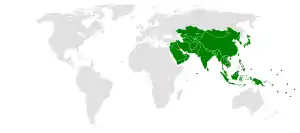
The Group, as with all the regional groups, is a non-binding dialogue group where subjects concerning regional and international matters are discussed. Additionally, the Group works to help allocate seats on United Nations bodies by nominating candidates from the region.[2][3]
Member States
The following are the Member States of the Asia and the Pacific Group:[4][5]
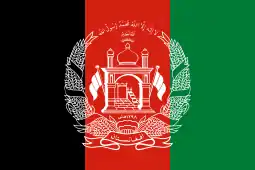 Afghanistan
Afghanistan Bahrain
Bahrain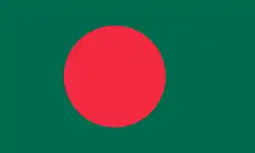 Bangladesh
Bangladesh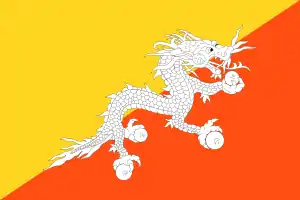 Bhutan
Bhutan Brunei Darussalam
Brunei Darussalam Cambodia
Cambodia China[lower-alpha 1][lower-alpha 2]
China[lower-alpha 1][lower-alpha 2] Cyprus
Cyprus Democratic People's Republic of Korea
Democratic People's Republic of Korea Fiji
Fiji India
India Indonesia
Indonesia Iran (Islamic Republic of)
Iran (Islamic Republic of) Iraq
Iraq Japan
Japan Jordan
Jordan Kazakhstan
Kazakhstan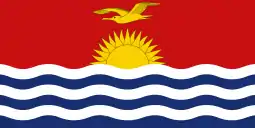 Kiribati
Kiribati Kuwait
Kuwait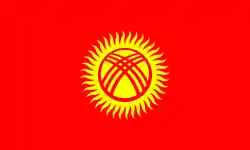 Kyrgyzstan
Kyrgyzstan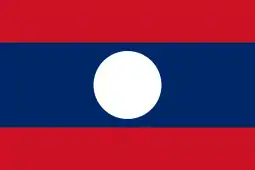 Lao People's Democratic Republic
Lao People's Democratic Republic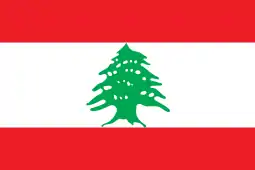 Lebanon
Lebanon Malaysia
Malaysia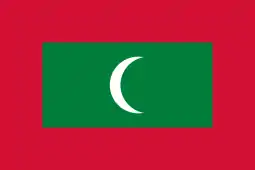 Maldives
Maldives Marshall Islands
Marshall Islands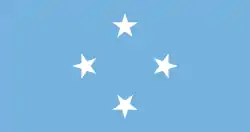 Micronesia (Federated States of)
Micronesia (Federated States of) Mongolia
Mongolia Myanmar[lower-alpha 3]
Myanmar[lower-alpha 3]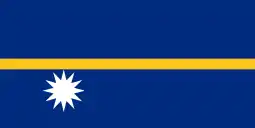 Nauru
Nauru Nepal
Nepal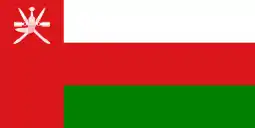 Oman
Oman Pakistan
Pakistan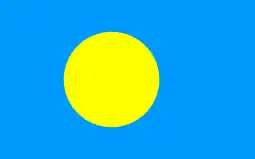 Palau
Palau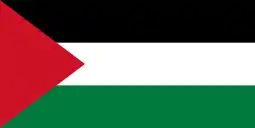 State of Palestine[lower-alpha 4]
State of Palestine[lower-alpha 4] Papua New Guinea
Papua New Guinea Philippines
Philippines Qatar
Qatar Republic of Korea
Republic of Korea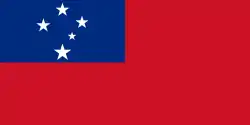 Samoa
Samoa Saudi Arabia
Saudi Arabia Singapore
Singapore Solomon Islands
Solomon Islands Sri Lanka
Sri Lanka Syrian Arab Republic
Syrian Arab Republic Tajikistan
Tajikistan Thailand
Thailand East Timor
East Timor Tonga
Tonga Turkey[lower-alpha 5]
Turkey[lower-alpha 5] Turkmenistan
Turkmenistan Tuvalu
Tuvalu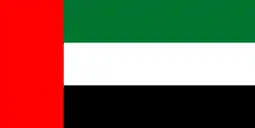 United Arab Emirates
United Arab Emirates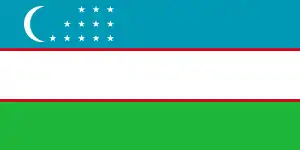 Uzbekistan
Uzbekistan Vanuatu
Vanuatu Viet Nam
Viet Nam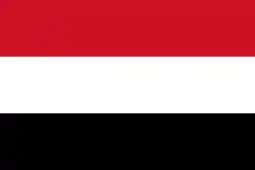 Yemen
Yemen
History
League of Nations
The precedent of the geographic distribution of seats was set by the United Nation's predecessor, the League of Nations. Under the League's system, a Nomination's Committee was created in order to create election slates for distribution of seats in the Council of the League.[3]
This proved a difficult task as the number of seats was on the Council was constantly changing. However, from 1926 to 1933 an unofficial pattern of distribution emerged where the non-permanent seats on the Council were distributed along the following lines:[3]
- 3 for Latin American states
- 1 for a Scandinavian state
- 1 for a Little Entente state (Czechoslovakia, Romania or Yugoslavia)
- 1 for a member of the British Commonwealth
- 1 for a Far Eastern state
- 1 seat each for Spain and Poland
Under this system, members from the current Asia and the Pacific Group only had two guaranteed seats on the Council, the Far East seat and Japan's permanent seat.
United Nations
During the drafting of the United Nations Charter, the idea of geographic distribution of seats of the new organisation's bodies was one of the priorities of the drafters. On the United State's recommendation, the very first General Committee of the United Nations was composed of:[3]
- The five permanent members of the Security Council
- 3 Latin American states
- 2 British Commonwealth states
- 2 Eastern European states
- 1 Western European state
- 1 Middle Eastern state
This distribution began the precedent of using regional groups for the allocation of seats in United Nations bodies. For example, the first election to the Economic and Social Council used a similar scheme, allocating seats along the following lines:[3]
- The five permanent members of the Security Council
- 4 Latin American states
- 2 British Commonwealth states
- 3 Eastern European states
- 2 Western European states
- 2 Near East states
However, these arrangements were not formal and were based on "Gentlemen’s Agreements."
Reform
Following a wave of decolonisation, there were multiple admissions into the United Nations from Asian and Pacific states. After the Bandung Conference in 1955, there was increasing solidarity among post-colonial states which led to pressure being put on the United Nations for increased representation of these states. This pressure led to Resolution 1192 (XII) of 12 December 1957. This resolution established a formal pattern for distribution of seats on the General Committee awarding four for Asian and African states.[3][6]
Continued pressure eventually also led to reform of the Security Council and the Economic and Social Council with the passage of Resolution 1991 (XVIII) of 17 December 1963. This resolution formally set up a pattern for the election of members to the Security Council and stipulated that five seats were to be allocated to African and Asian states. It also formally set up a pattern for the election of members to the Economic and Social Council and allocated seven seats for African and Asian states.[3][7]
Present
After continued decolonisation and an increase in membership of the United Nations, the groups were again modified in 1964. Prior to this African and Asian states were included in the same group. However, theses two regions were split with each one receiving its own group. This split allowed even more geographical distribution of seats among the Member States in different UN bodies.[8]
At its creation, the Group was simply known as the Asia Group. However, by the 1970s, Pacific island nations were gaining independence and joining the group. By the mid-2000s the number of Pacific island nations in the group had reached over one fifth of the membership, so they began to advocate for a change of name of the Group.[9]
These efforts were met with success in 2011 when the United Nations agreed to include "Pacific" in the name of the Group, changing it to the Group of Asia and the Pacific Small Island Developing States at China's insistence. This change in name recognises the growing role Pacific island nations play in the United Nations System.[10]
Representation
Security Council
The Asia and the Pacific Group holds 3 seats on the Security Council, 2 non-permanent and 1 permanent. The current members of the Security Council from the Group are:[11][12]
| Country | Term |
|---|---|
| Permanent | |
| 1 January 2021 – 31 December 2022 | |
| 1 January 2020 – 31 December 2021 |
Economic and Social Council
The Asia and the Pacific Group holds 11 seats on the United Nations Economic and Social Council. The current members of the Economic and Social Council from the Group are:[13][14]
| Country | Term |
|---|---|
| 1 January 2021 – 31 December 2023 | |
| 1 January 2019 – 31 December 2021 | |
| 1 January 2020 – 31 December 2022 | |
Human Rights Council
The Asia-Pacific Group holds 13 seats on the United Nations Human Rights Council. The current members of the Economic and Social Council from the Group are:[15][16]
| Country | Term |
|---|---|
| 1 January 2021 – 31 December 2023 | |
| 1 January 2019 – 31 December 2021 | |
| 1 January 2020 – 31 December 2022 | |
Presidency of the General Assembly
Every five years in the years ending in 1 and 6, the Asia-Pacific Group is eligible to elect a president to the General Assembly.[1]
The following is a list of presidents from the region since its official creation in 1963:[17]
| Year Elected | Session | Name of President | Country | Note |
|---|---|---|---|---|
| 1966 | 21st | Abdul Rahman Pazhwak | Also chaired the 5th and 6th emergency special sessions of the General Assembly | |
| 1971 | 26th | Adam Malik | ||
| 1976 | 31st | H. S. Amerasinghe | ||
| 1981 | 36th | Ismat T. Kittani | Also chaired the 7th and 9th emergency special sessions and the 12th special session of the General Assembly | |
| 1986 | 41st | Humayun Rasheed Choudhury | Also chaired the 14th special session of the General Assembly | |
| 1991 | 46th | Samir S. Shihabi | ||
| 1996 | 51st | Razali Ismail | Also chaired the 10th emergency special and 19th special sessions of the General Assembly | |
| 2001 | 56th | Han Seung-soo | Also chaired the 10th emergency special session of the General Assembly | |
| 2006 | 61st | Sheikha Haya Rashed Al Khalifa | Also chaired the 10th emergency special session of the General Assembly | |
| 2011 | 66th | Nassir Abdulaziz Al-Nasser | ||
| 2016 | 71st | Peter Thomson | ||
| Future | ||||
| 2021 | 76th | TBD | TBD | |
| 2026 | 81st | TBD | TBD | |
| 2031 | 86th | TBD | TBD | |
References
- Wanza, Serah N. (27 November 2017). "What Are The Five Regional Groups of the United Nations?". Worldatlas. Worldatlas. Retrieved 26 February 2019.
- "Latin American and Caribbean Group (GRULAC)". Ministry of Foreign Affairs of Colombia. Ministry of Foreign Affairs of Colombia. n.d. Retrieved 28 February 2019.
- Agam, Hasmy, and Sam Daws, Terence O'Brien and Ramesh Takur (26 March 1999). What is Equitable Geographic Representation in the Twenty-First Century (PDF) (Report). United Nations University. Retrieved 27 February 2019.CS1 maint: uses authors parameter (link)
- "United Nations Regional Groups of Member States". United Nations Department for General Assembly and Conference management. United Nations. n.d. Retrieved 26 February 2019.
- United Nations Handbook 2018–19 (PDF) (56 ed.). Wellington: Ministry of Foreign Affairs and Trade of New Zealand. 2018. pp. 15–17. ISSN 0110-1951.
- United Nations General Assembly Session 12 Resolution 1192 (XII). Composition of the General Committee of the General Assembly A/RES/1192(XII) 12 December 1957. Retrieved 28 February 2019.
- United Nations General Assembly Session 18 Resolution 1991 (XVII). Question of Equitable Representation on the Security Council and the Economic and Social Council A/RES/1991(XVIII) 17 December 1963. Retrieved 28 February 2019.
- The GA Handbook: A practical guide to the United Nations General Assembly (PDF) (2 ed.). New York: Permanent Mission of Switzerland to the United Nations. 2017. p. 124. ISBN 978-0-615-49660-3.
- "Asian group of nations at UN changes its name to Asia-Pacific group". Radio New Zealand. Wellington. 1 September 2011. Retrieved 26 February 2019.
- "UN Recognises The Pacific With Name Change". Secretariat of the Pacific Regional Environment Programme. Secretariat of the Pacific Regional Environment Programme. 3 September 2011. Retrieved 26 February 2019.
- "Current Members". United Nations Security Council. United Nations. n.d. Retrieved 26 February 2019.
- "General Assembly Elects Estonia, Niger, Saint Vincent and Grenadines, Tunisia, Viet Nam as Non-Permanent Members of Security Council for 2020-2021". United Nations Meetings Coverage & Press Releases. United Nations. 7 June 2019. Retrieved 1 January 2020.
- "Members". United Nations Economic and Social Council. United Nations. n.d. Retrieved 26 February 2019.
- "General Assembly Elects 19 Economic and Social Council Members to Terms Beginning 1 January 2020, Adopts Resolution Commemorating Signing of United Nations Charter". United Nations Meetings Coverage & Press Releases. United Nations. 14 June 2019. Retrieved 1 January 2020.
- "Current Membership of the Human Rights Council, 1 January - 31 December 2019 by regional groups". United Nations Human Rights Council. United Nations. n.d. Retrieved 26 February 2019.
- "General Assembly Elects 14 Member States to Human Rights Council, Appoints New Under-Secretary-General for Internal Oversight Services". United Nations Meetings Coverage & Press Releases. United Nations. 17 October 2019. Retrieved 1 January 2020.
- "Past Presidents". United Nations General Assembly. United Nations. n.d. Retrieved 27 February 2019.
Notes
- Formerly represented by the
 Republic of China until 1971.
Republic of China until 1971. - Permanent member of the United Nations Security Council
- Formerly known as Burma until 1989.
- While the State of Palestine is only a non-member observer state in the General Assembly, it participates fully in the Asia and the Pacific Group.
- Turkey participates the Western European And Others Group, as well as the Asian Group, but for electoral purposes it is considered a member of Western European And Others Group.
External links
- Records of the Department of General Assembly and Conference Management (DGACM) (2002-present) at the United Nations Archives